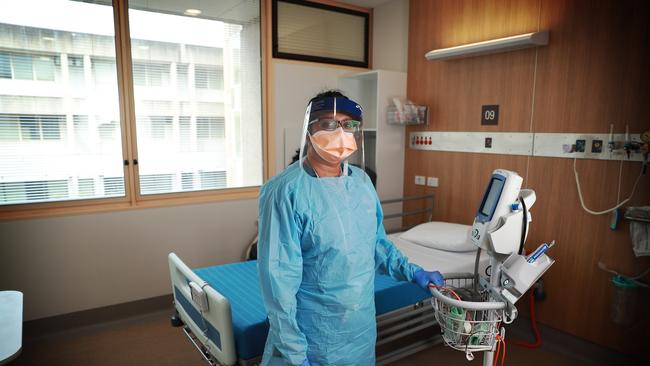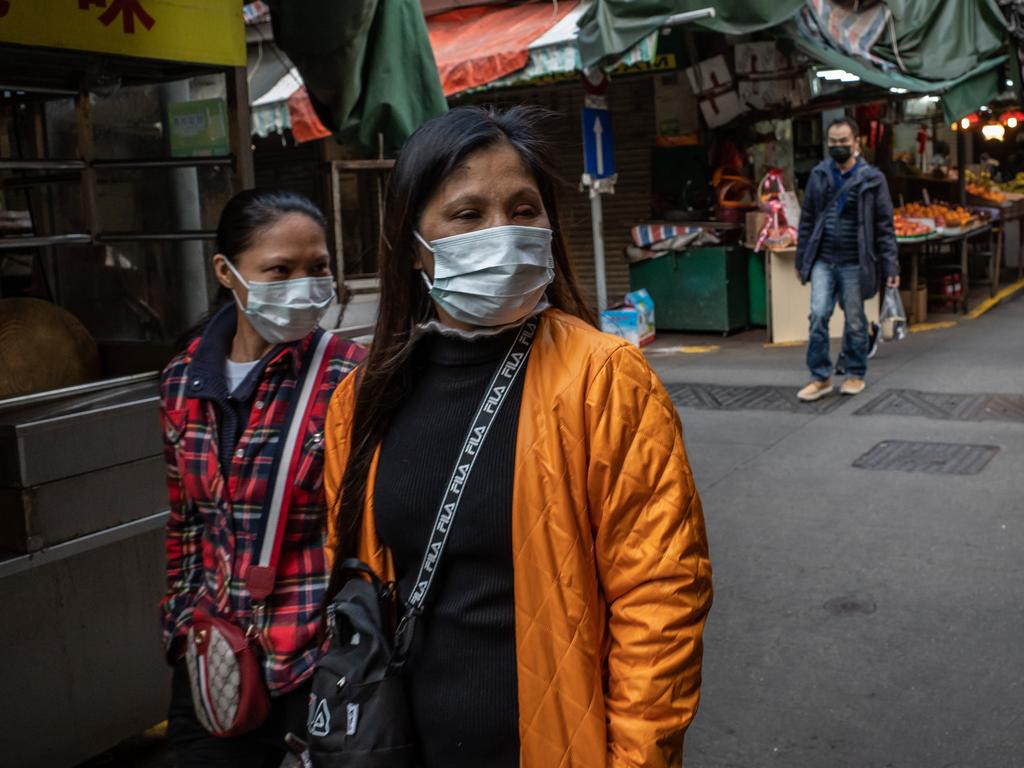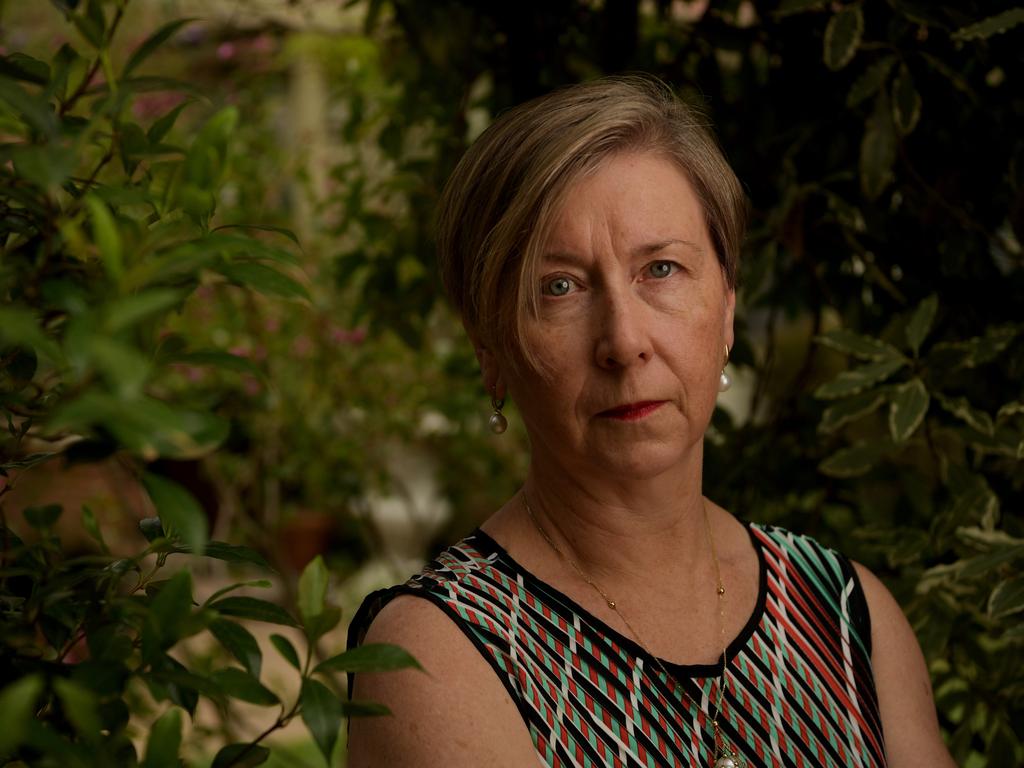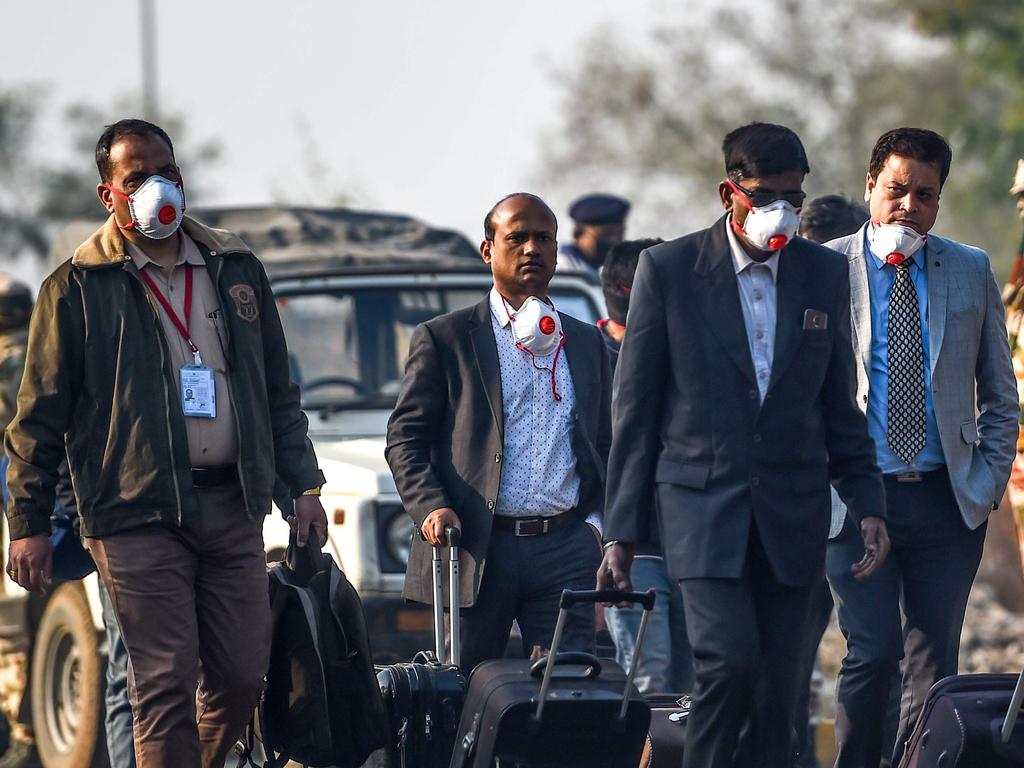Coronavirus: Hi-tech isolation unit to combat deadly virus outbreaks
Australia’s first purpose-built biocontainment unit is being prepared to care for a potential influx of coronavirus cases.

Australia’s first purpose-built biocontainment unit is being prepared with capacity to care for a potential influx of coronavirus cases, with patients able to be completely isolated in the new hospital wing that will have high-level disinfection capacity and its own intensive care services.
The construction of the NSW Biocontainment Centre at Westmead, in Sydney’s west, follows the building of similar units in the US, Britain and Europe.
It will be staffed by nurses and doctors with advanced training in treating dangerous diseases such as Ebola, and will act as a training facility for other hospitals.
The construction of the centre comes as the University of Queensland announced it had created a coronavirus vaccine candidate that would soon begin to be tested on animals. UQ scientists are among three teams globally working with the Coalition for Epidemic Preparedness Innovations to develop a vaccine.
“There is still extensive testing to ensure that the vaccine candidate is safe and creates an effective immune response, but the technology and the dedication of these researchers means the first hurdle has been passed,” said UQ vice-chancellor Peter Hoj.
The development follows moves by hospitals to consider launching clinical trials of antiviral medication to treat coronavirus, following the Gold Coast University Hospital’s use of an HIV drug aimed at killing the virus in its COVID-19 (coronavirus) patients.
Doctors at the Gold Coast hospital used the HIV drug Kaletra in an experimental treatment that follows the launch of clinical trials of antiviral drugs in China.
Westmead Hospital in Sydney and the Monash Medical Centre in Melbourne said they would also consider using antiviral drugs if they were treating very ill coronavirus patients. Westmead’s director of infectious disease services Tania Sorrell said no patients treated there yet had required such treatment.
“We’ve had discussions about Kaletra, which is used to treat patients with HIV infection but is of unproven benefit in COVID-19,” Professor Sorrell said.
“We would consider using it in a patient who is becoming rapidly more seriously ill or requiring intensive care, but because its value is unproven, we are not currently using it in less severe cases.
“There is another drug in clinical trial, in China, called Remdisivir. Initial studies suggest that Remdisivir may be effective and likely more so than Kaletra. That’s part of the trial that we’re really keen to see some information from within the next month or so.”
The Monash Medical Centre has cared for two coronavirus patients, with both requiring only supportive treatments such as Panadol to reduce fever and oxygen to assist breathing.
The developments in treatment come as hospitals are preparing to care for more patients with coronavirus. Australia has so far only had 15 diagnosed cases but there are fears the disease will be endemic worldwide if it cannot be contained in China.
The biocontainment centre at Westmead will be housed in a planned infectious disease ward in the hospital’s new central acute services building, to be opened in October. The ward will have separate airconditioning, laboratory services and pharmacy supplies.
“The biocontainment centre will have two high-level quarantine rooms for severely ill patients who might require ventilators or haemodialysis or high-level intensive care,” said Professor Sorrell.
“In addition, there will be four rooms … with appropriate airconditioning, ensuites and clinical and patient waste disposal facilities designed specifically to prevent transmission of infection while at the same time providing the best care for patients.
“This six-bed biocontainment centre can be locked down so that it functions as an independent ‘isolation ward within a ward’ and if necessary, the whole infectious disease patient ward … can be locked down and utilised for patients with high-level infections.”







